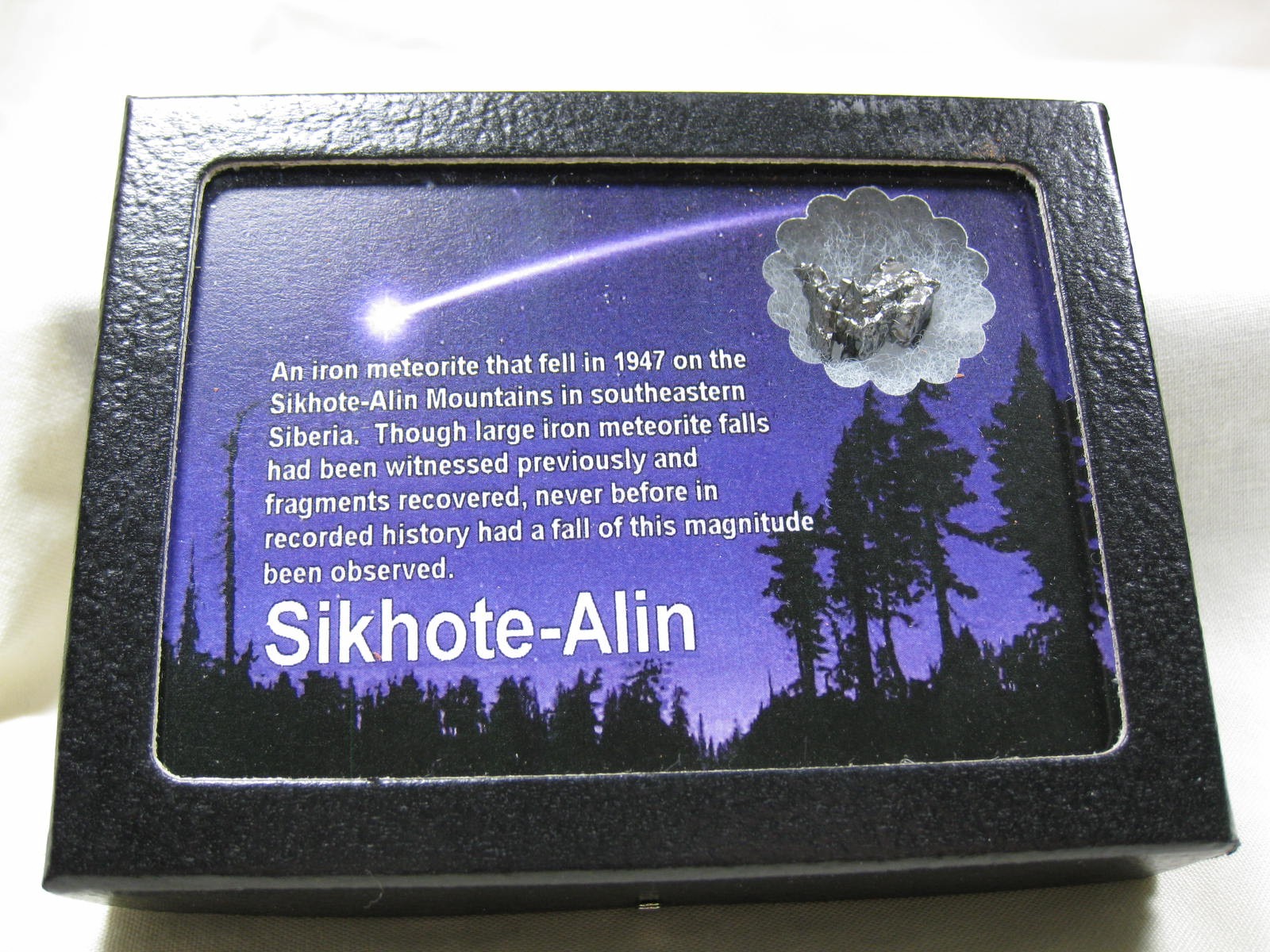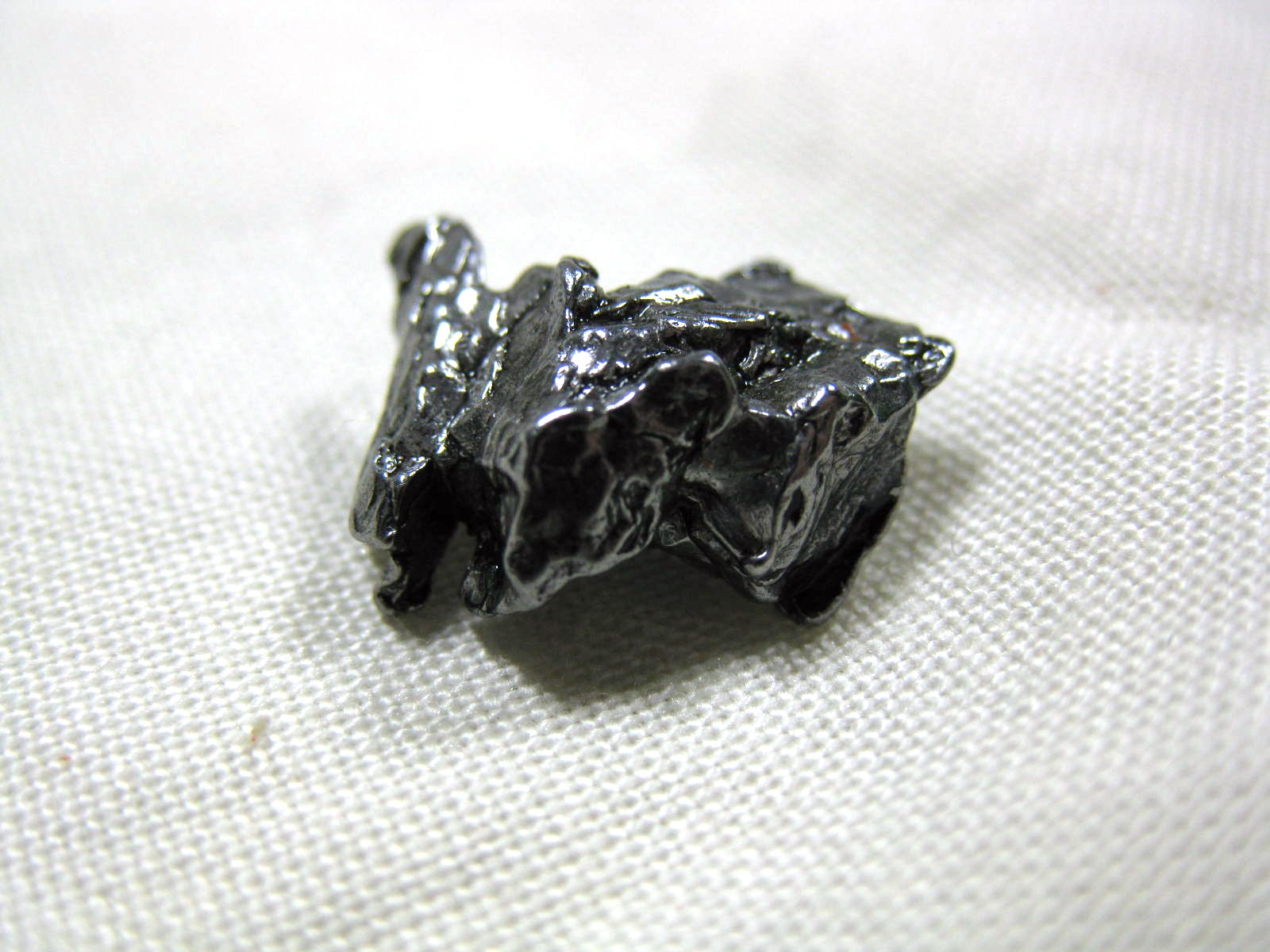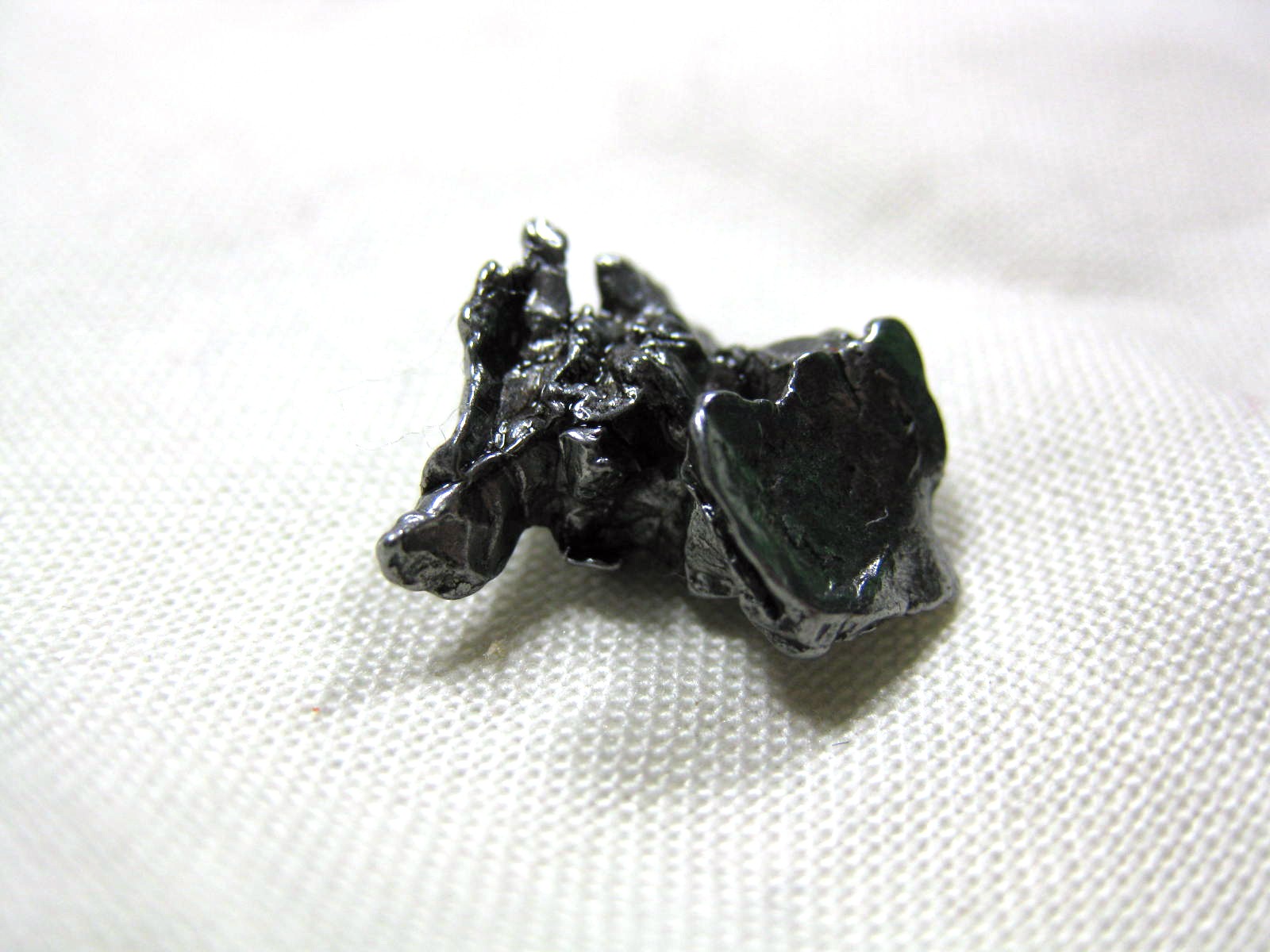Description
- Sikhote-Alin Meteorite
- Fell in 1947
- Russia
- Specimen measures approx. 9/16″ long and will come in the 3″ x 4″ Riker Mount with Label as Shown
An iron meteorite fell on the Sikhote-Alin Mountains, in southeastern Russia, in 1947. Though large iron meteorite falls had been witnessed previously and fragments recovered, never before in recorded history had a fall of this magnitude been observed. An estimated 23 tonnes of fragments survived the fiery passage through the atmosphere and reached the Earth, but still less than the largest meteorite find, the Hoba meteorite of 60 tonnes.
At around 10:30 on 12 February 1947, eyewitnesses in the Sikhote-Alin Mountains, Primorye, Soviet Union, observed a large bolide brighter than the sun that came out of the north and descended at an angle of about 41 degrees. The bright flash and the deafening sound of the fall were observed for 300 kilometres (190 mi) around the point of impact not far from Luchegorsk and approximately 440 km (270 mi) northeast of Vladivostok. A smoke trail, estimated at 32 km (20 mi) long, remained in the sky for several hours.
As the meteor, traveling at a speed of about 14 km/s (8.7 mi/s), entered the atmosphere, it began to break apart, and the fragments fell together. At an altitude of about 5.6 km (3.5 mi), the largest mass apparently broke up in a violent explosion called an air burst.







